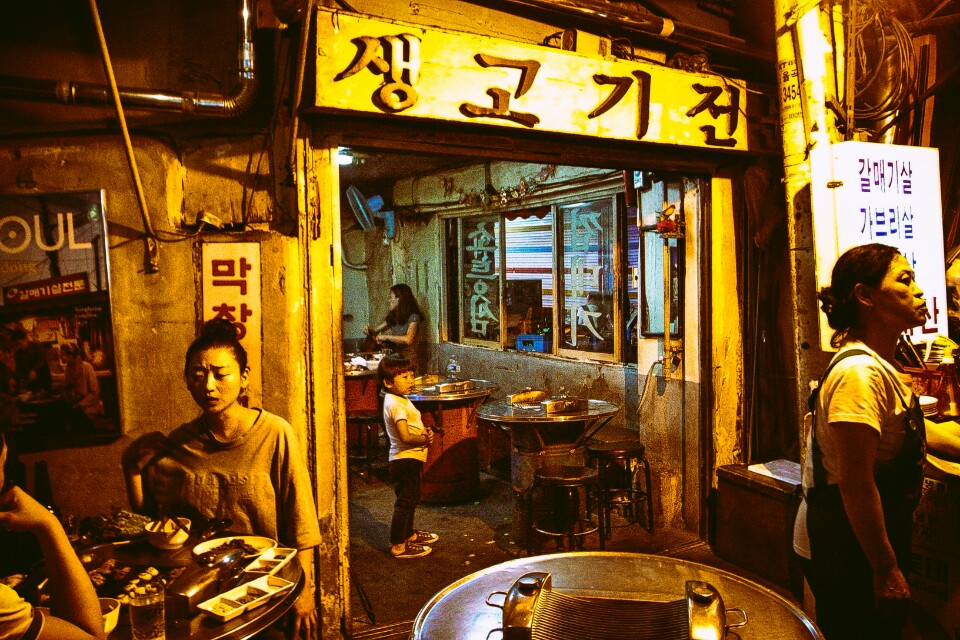
Koreans I meet for the first time tend to draw all their questions from the same well. What they ask starts out basic — why I came to Korea, what kind of work I do, how did I become interested in Korea in the first place — and then gets more culturally revealing. Having asked how long I’ve lived here, for instance, they often follow up with, “Until when will you live here?”, I question I wouldn’t even imagine asking a recent arrival in America. When the subject turns to matters of the table, as in this food-centric society it always does, they almost invariably ask not “Do you like Korean food?” but “Can you eat Korean food?” — a matter not of taste, they imply, but ability.
If Korean food is indeed a challenge, Graham Holliday can certainly rise to it, as extensively demonstrated in the new Eating Korea: Reports on a Culinary Renaissance. This eating-driven travelogue, which comes branded as “an Anthony Bourdain book,” has something of the swagger (a word now associated with that wisecracking, peripatetic celebrity chef with an admittedly wearying frequency) that name suggests. Holliday likens eating Korean soups to “entering a boxing ring. Red pepper arrived as a right hook, garlic a blow to the torso.” The stir-fried chicken dish dak galbk is “a violence, a mess, a mistake that works.” A soup, “thick, fiery,” and “bood-red,” drips “delicious violence.” He observes his order of live hagfish as they “convulsed violently as they sizzled on the grill.”
Of his most gruesome dinner he writes that “ovaries, intestines, blood, cartilage, guts, and stomach smiled up at me like Carrie on prom night,” but elsewhere Korean food proves equally suited to metaphors of concupiscence as to those of carnage: a strong tofu dish is a “nuns and whores slutty swingers’ night,” a famous version of the rice-and-vegetable dish bibimbap a “nipple-tassle-wearing, cigarette-holder-flicking glamour puss.” After all that, a “hangover stew with clotted cow’s blood” strikes him as “an attractive-sounding proposition.” This language brings to mind Korea’s explosion onto the international cinema scene around the turn of the century, when Western distributors pitched Korean film, not quite accurately, as the next big source of the sex- and violence-saturated Asian “extreme.”
Read the whole thing at the Los Angeles Review of Books.